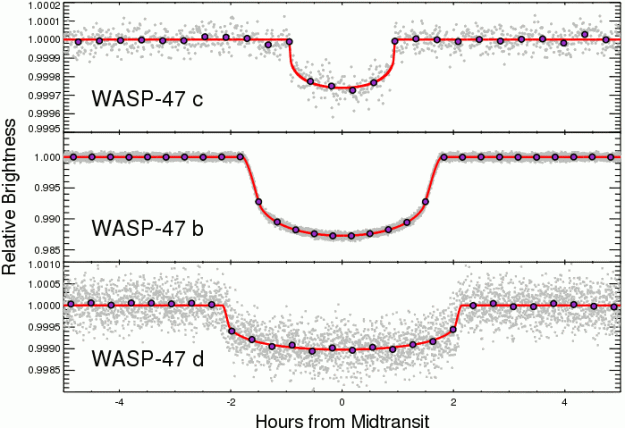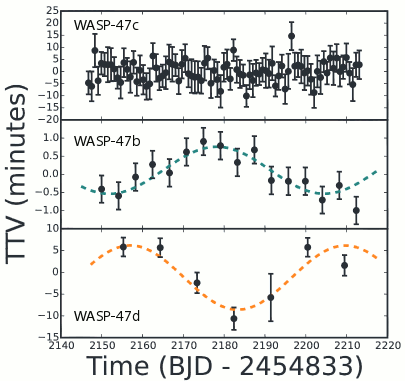Even though WASP has found nearly 200 planets we are still announcing systems that are unlike any previous ones. WASP-148 is an example, as described in the discovery paper by Guillaume Hébrard et al.
WASP first detected transits of the hot Jupiter WASP-148b in an 8.8-day orbit. Spectroscopic observations with OHP/SOPHIE, aimed at measuring the planet’s mass, then found that there was also a second massive planet in a longer, 35-day orbit:

The orbits of both planets are eccentric, likely because they are perturbing each other by their gravitational attraction. Further, the gravitational perturbations mean that the transits of the inner planet vary in time by 15 mins.

We don’t yet know whether the outer planet, WASP-148c, also transits (since its longer period means that there are gaps in WASP’s coverage of its orbit), but this patch of sky is currently being observed by the TESS satellite. The space-based photometry from TESS will be good enough to detect any transits of WASP-148c, to map out transit-timing variations, and to look for additional planets in the system that are too low mass to have been detected in the radial-velocity data. WASP-148 is thus an important system for studying an unusual planetary-system architecture, with two massive planets in relatively close orbits in resonance with each other.









